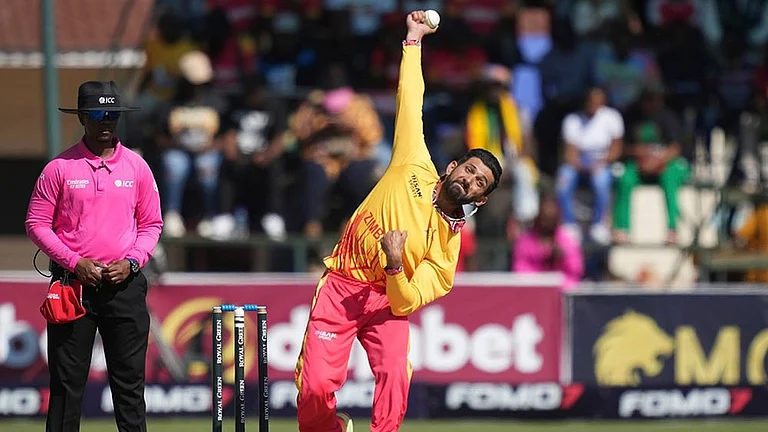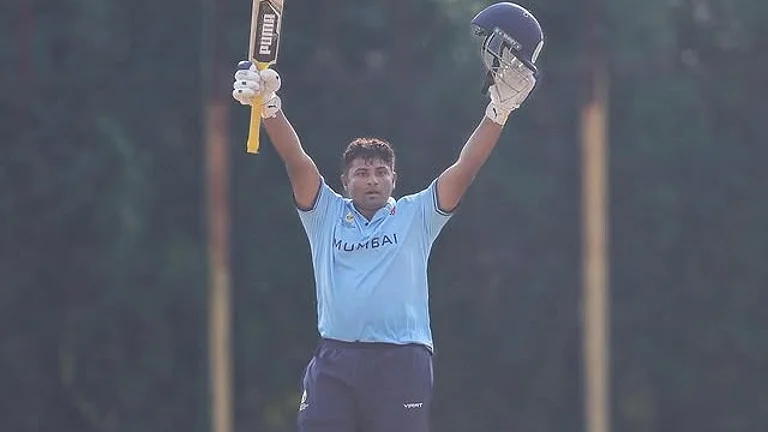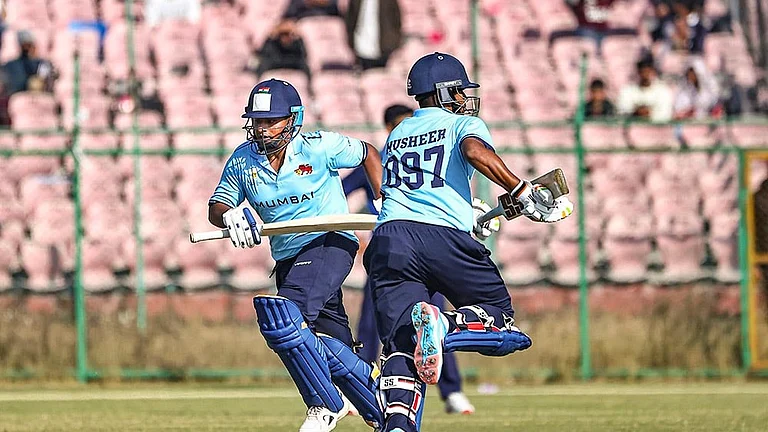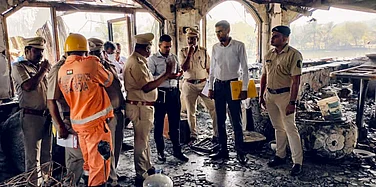The mighty Dhauladhars, fondly known as ‘The White Range’ for being a storehouse of water held-up in its giant glaciers, have turned grey this year. Snow cover in the higher mountains has declined up to 18.5 per cent. The rainfall deficit in the past two months was almost 37 per cent.
Shimla set a new record for the highest minimum temperature in 17 years in February when it recorded a minimum temperature of 14.4 degree Celsius. Meanwhile, the maximum temperature in February crossed the 23 degree mark, surpassing the highest record of 22.6 degree Celsius recorded in 2006.
Weather experts confirmed that this was the driest winter in the hills of Himachal Pradesh, ringing alarm bells for the coming days.
What’s in the offing for Shimla and major hill towns in Himachal Pradesh?
There are fears about the drinking water crisis — a perennial problem in Shimla, and also for the rest of Himachal Pradesh.
The town went without snow this winter as scanty rains during January-February 2023 led to drought-like conditions, besides an unusual warming-up in the mountains.
Former Deputy Mayor of Shimla Tikender Singh Panwar minces no words when he warns that Shimla is heading towards water scarcity, a situation that made climate change experts compare Shimla — the summer capital of India during the erstwhile British era — with Cape Town in 2018.
An urban policy expert and conservationist, Panwar says water crisis is imminent in the entire state, not just Shimla, due to a nearly 80 percent snow deficit.
“This winter, starting from November 2022 to February 2023, we have not seen even one snow spell. This is a worrying sign as climate change and global warming is taking a big toll on the mountains. We have a huge dependence on snow in higher mountain ranges. The glaciers are slowly receding.The water discharge in glacier-fed rivers, streams and lakes has been hit,” he explains.
Panwar recalls the 2018 water crisis when Shimla went without water for eight to 10 days because of drying up of sources on which Shimla had been dependent since the British era. This also made headlines in the Washington Post and New York Times, besides national media.
Foreseeing the trend, Panwar points out that at least two sources — Giri and Gumma — are totally dependent on snowfall in the adjoining mountains. Since there is no snow, the sources are now going to fall short of water availability in the summer months when temperatures rise and the demand for water goes-up.
Based on inputs from the MeT experts, Chief Secretary Prabodh Saxena reviewed the situation with top officials, including Deputy Commissioners, to prepare a mitigation strategy. There are chances that the state will not only face water scarcity, but also a drop in power generation at hydro-power projects located in the Sutlej, Ravi and Chenab basins.
During summers, most hydro-power projects run at optimum level to meet additional power demand in the plains. But what will happen when the water discharge drops further in the rivers feeding these hydro-power projects?
"The departments should work in close tie-up with the State Disaster Management department and should be ready to take timely appropriate action during any unforeseen calamities which may arise due to the dry spell.The Deputy Commissioners should take regular meetings of the line departments," Saxena told officials.
Pankaj Lalit, Chief Executive Officer (CEO) of Shimla Jal Prabandhan Nigam (SJPN) admits, “There is going to be water scarcity in Shimla and we are preparing for it. We are already supplying drinking water to the town for six days, instead of seven days a week. The SJPN is trying to plug all leakages in the distribution network, besides boosting supplies from the Chaba source at Sutlej.”
He claims that the old water supply pipes between Shimla's main storage tank at the Ridge and Sanjaul have been replaced. Work on replacing pipes at other sectors, where the water gets wasted due to leakages, will soon be done. But the availability of water at the source remains a key factor.
Currently, SJPN is supplying 39 to 42 MLD of water in the greater Shimla areas but the availability keeps fluctuating at the source, especially in Gumma, which has 21 MLD capacity. At Giri, the availability had recently dropped to 12 MLD – a shortfall of seven to nine MLD. Other water sources to Shimla include Churot, Seog, Chairh and Koti Brandi.
What adds to the water woes of Shimla is the increased tourist footfall during peak summers. The hoteliers have already been complaining about an undeclared “water ration” that forces them to deploy tankers for sourcing additional water.
“Water is one of the most vital natural resources .The state is richly endowed with a hilly terrain having an enormous volume of water from the catchment areas of Satluj, Beas, Ravi and Chenab rivers. But now, due to an 18.5 percent decrease in snow cover and glaciers not getting properly recharged, the state is sure to face a crisis in regard to consumptive use of water,” says SP Bhardwaj, a former scientist at Dr YS Parmar University of Horticulture and Forestry.
A study by the HP Council for Science and Technology found that there are 800 glaciers in Himachal’s Himalayas. The number has increased as large glaciers have broken into smaller ones with the increasing temperature in the past three decades.
During the summer of 2022, more than 500 water supply and irrigation schemes dried up or became defunct due to water discharge.
“We are likely to have similar problems this time also. I have asked the engineers to keep tabs on water supply schemes likely to be hit due to insufficient rains.There is also a need for preservation of traditional water bodies and water conservation by the citizens,” says Mukesh Agnihotri, Deputy Chief Minister of Himachal Pradesh.
Officers of the forest department have also been directed to be equipped with their men and machinery to face any situation due to forest fires during the upcoming summer season.
The Animal Husbandry department was directed to store sufficient fodder and water for the livestock.
He also appealed to the people to avoid wastage of water and to use it judiciously.


























